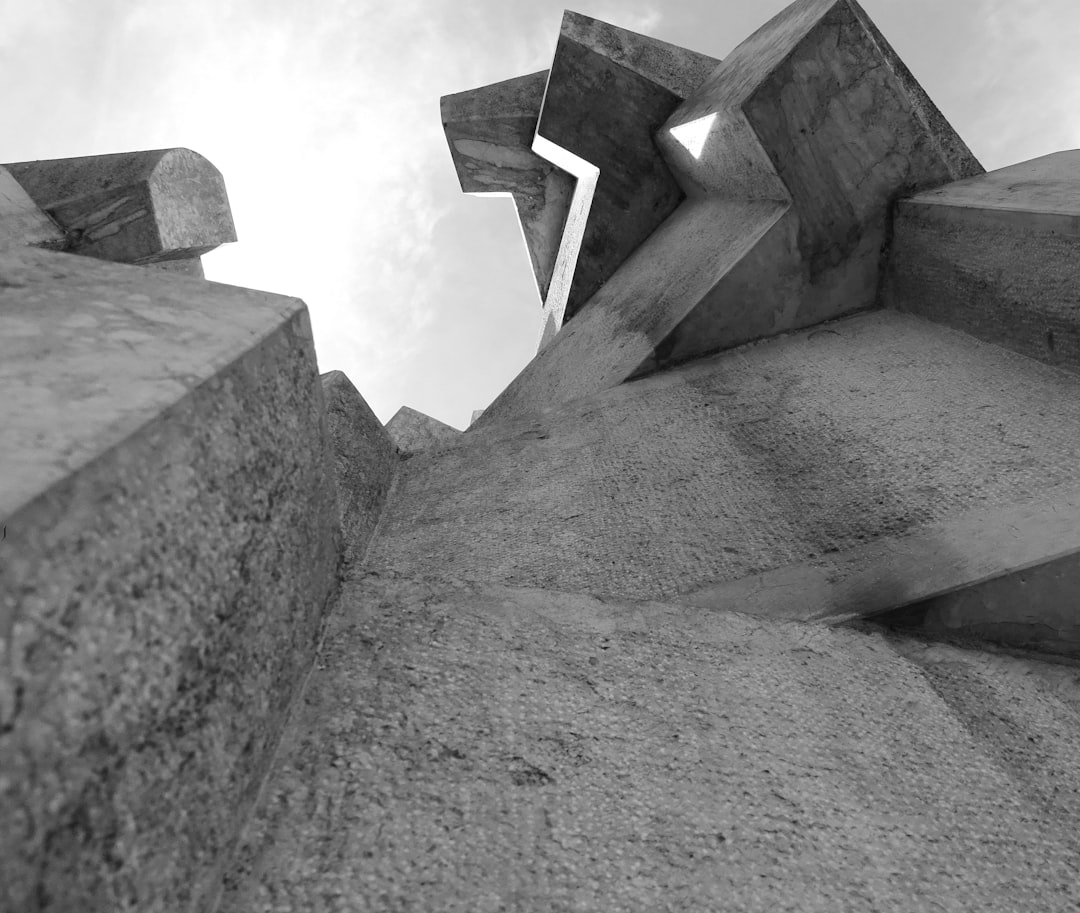Traditional concrete has been used for centuries in construction due to its strength and durability. However, it is not without its limitations. Over time, concrete structures can develop cracks and other forms of damage, which can compromise their integrity and require costly repairs. This is where self-healing concrete technology comes in.
Self-healing concrete is a revolutionary solution that aims to address the limitations of traditional concrete by incorporating materials that can repair themselves when damaged. This technology has the potential to significantly extend the lifespan of infrastructure, reduce maintenance costs, and improve safety and reliability.
Key Takeaways
- Self-healing concrete technology can extend the lifespan of infrastructure.
- Self-healing concrete works by using bacteria or capsules to repair cracks.
- Self-healing concrete has advantages over traditional concrete, including increased durability and reduced maintenance costs.
- Self-healing concrete can be used in a variety of infrastructure applications, including roads, bridges, and buildings.
- Self-healing concrete can provide cost and environmental benefits, but there are still challenges and limitations to overcome.
Understanding the Importance of Infrastructure Lifespan Extension
Sustainable infrastructure development is crucial for the future. As populations grow and urbanization continues, there is an increasing demand for infrastructure that can withstand the test of time. However, traditional concrete structures often require frequent repairs and maintenance, leading to significant costs and disruptions.
Self-healing concrete has the potential to extend the lifespan of infrastructure by repairing itself when damage occurs. By reducing the need for constant repairs, this technology can help save resources, reduce waste, and minimize disruptions to daily life. It also contributes to sustainable development by promoting the use of durable materials that can withstand the test of time.
How Self-Healing Concrete Works
Self-healing concrete works by incorporating materials that can react with water or other external stimuli to repair cracks and other forms of damage. There are several mechanisms through which self-healing can occur.
One common mechanism is the use of encapsulated healing agents within the concrete mixture. These healing agents are released when cracks form, allowing them to come into contact with water and react to form a solid material that fills the crack and restores the structural integrity of the concrete.
Another mechanism involves the use of bacteria or fungi that are embedded in the concrete mixture. When cracks form, these microorganisms are activated and produce calcium carbonate or other minerals that can fill the cracks and heal the concrete.
Advantages of Self-Healing Concrete Over Traditional Concrete
| Advantages of Self-Healing Concrete Over Traditional Concrete |
|---|
| 1. Increased Durability |
| 2. Reduced Maintenance Costs |
| 3. Improved Sustainability |
| 4. Enhanced Safety |
| 5. Longer Service Life |
Self-healing concrete offers several advantages over traditional concrete, making it an attractive option for infrastructure development.
One of the main advantages is increased durability and lifespan. By repairing itself when damage occurs, self-healing concrete can prevent small cracks from growing and becoming more serious issues. This extends the lifespan of infrastructure and reduces the need for costly repairs.
Another advantage is reduced maintenance costs. Traditional concrete structures often require frequent inspections and repairs, which can be time-consuming and expensive. With self-healing concrete, the need for constant maintenance is significantly reduced, resulting in cost savings over the long term.
Additionally, self-healing concrete improves safety and reliability. Cracks in concrete structures can compromise their structural integrity, posing risks to people and property. By repairing itself, self-healing concrete ensures that the structure remains strong and stable, reducing the risk of accidents or failures.
Applications of Self-Healing Concrete in Infrastructure
Self-healing concrete has already been used in various infrastructure projects around the world. One notable example is the construction of a self-healing concrete bridge in the Netherlands. The bridge was built using self-healing concrete that incorporates bacteria capable of producing calcium carbonate to repair cracks.
In addition to bridges, self-healing concrete can also be used in other types of infrastructure such as buildings, tunnels, and roads. The technology has the potential to revolutionize the construction industry by providing more durable and sustainable solutions for infrastructure development.
Cost Benefits of Self-Healing Concrete in Construction

While self-healing concrete may have higher upfront costs compared to traditional concrete, it offers significant long-term cost savings. By reducing the need for frequent repairs and maintenance, self-healing concrete can help save resources and minimize disruptions to daily life.
A study conducted by researchers at Delft University in the Netherlands found that the use of self-healing concrete in bridge construction resulted in a 50% reduction in maintenance costs over a 50-year period. This demonstrates the potential cost benefits of using self-healing concrete in construction projects.
Environmental Benefits of Self-Healing Concrete
Self-healing concrete also offers several environmental benefits. One of the main advantages is a reduced carbon footprint. Traditional concrete production is a major contributor to greenhouse gas emissions, primarily due to the production of cement, which requires high energy inputs and releases large amounts of carbon dioxide.
Self-healing concrete can help reduce the carbon footprint of infrastructure development by using alternative materials that have lower carbon emissions. For example, some self-healing concrete mixtures incorporate industrial by-products such as fly ash or slag, which are waste materials from other industries. By using these materials, self-healing concrete reduces the demand for traditional cement and helps reduce carbon emissions.
Challenges and Limitations of Self-Healing Concrete
While self-healing concrete offers many advantages, there are also challenges and limitations that need to be addressed for widespread implementation.
One of the main technical challenges is ensuring that the self-healing mechanisms are effective and reliable. The healing agents or microorganisms used in self-healing concrete need to be able to react quickly and effectively when cracks form. Additionally, the healing process needs to be able to withstand various environmental conditions such as temperature changes and exposure to chemicals.
Cost is another limitation of self-healing concrete. The incorporation of healing agents or microorganisms can increase the cost of production compared to traditional concrete. However, as the technology advances and becomes more widely adopted, it is expected that the costs will decrease.
Implementation challenges also exist, as self-healing concrete requires specialized knowledge and expertise for proper installation and maintenance. Training and education will be necessary to ensure that construction professionals are familiar with the technology and can effectively implement it in their projects.
Future of Self-Healing Concrete Technology
The future of self-healing concrete technology looks promising. Researchers and engineers are continuously working on improving the effectiveness and reliability of self-healing mechanisms. This includes developing new materials, optimizing the healing process, and exploring new applications for the technology.
One potential advancement is the use of nanotechnology in self-healing concrete. Nanoparticles can be incorporated into the concrete mixture to enhance its self-healing properties. These nanoparticles can react with water or other external stimuli to form a solid material that fills cracks and restores the structural integrity of the concrete.
In terms of future applications, self-healing concrete has the potential to be used in a wide range of infrastructure projects. This includes not only bridges and buildings but also offshore structures, dams, and pipelines. The technology can help improve the durability and sustainability of these structures, ensuring their long-term performance and reducing the need for costly repairs.
The Role of Self-Healing Concrete in Sustainable Infrastructure Development
Self-healing concrete technology has the potential to revolutionize the construction industry by providing more durable and sustainable solutions for infrastructure development. By repairing itself when damage occurs, self-healing concrete can extend the lifespan of infrastructure, reduce maintenance costs, and improve safety and reliability.
While there are challenges and limitations that need to be addressed, ongoing research and development efforts are expected to overcome these obstacles. The future of self-healing concrete technology looks promising, with potential advancements in materials, processes, and applications.
As populations continue to grow and urbanization increases, sustainable infrastructure development becomes increasingly important. Self-healing concrete offers a solution that can help meet this demand by providing infrastructure that can withstand the test of time and minimize disruptions to daily life. By embracing this technology, we can build a more sustainable future for generations to come.
If you’re interested in learning more about the fascinating world of self-healing concrete and how it can extend the lifespan of infrastructure, you won’t want to miss this informative article from Tablet Jankari. In their blog post titled “Revolutionizing Construction: The Power of Self-Healing Concrete,” they delve into the innovative technology behind this remarkable material and its potential to revolutionize the construction industry. Discover how cracks in concrete can now be repaired autonomously, leading to stronger and more durable structures. Don’t miss out on this eye-opening read! Read more
FAQs
What is self-healing concrete?
Self-healing concrete is a type of concrete that has the ability to repair itself when cracks or damage occur. It contains bacteria or other materials that can react with water and air to produce calcium carbonate, which fills in the cracks and restores the concrete’s strength.
How does self-healing concrete work?
Self-healing concrete works by using bacteria or other materials that are embedded in the concrete mix. When cracks occur, the bacteria or other materials are activated by water and air, which triggers a chemical reaction that produces calcium carbonate. This fills in the cracks and restores the concrete’s strength.
What are the benefits of self-healing concrete?
Self-healing concrete can extend the lifespan of infrastructure by reducing the need for repairs and maintenance. It can also improve the durability and strength of concrete structures, making them more resistant to damage from weather, traffic, and other factors.
What types of infrastructure can benefit from self-healing concrete?
Self-healing concrete can be used in a variety of infrastructure projects, including bridges, roads, tunnels, and buildings. It is particularly useful in areas where infrastructure is exposed to harsh weather conditions or heavy traffic.
Is self-healing concrete more expensive than traditional concrete?
Self-healing concrete can be more expensive than traditional concrete, but the cost is often offset by the savings in repairs and maintenance over the lifespan of the infrastructure. Additionally, as the technology becomes more widely used, the cost is likely to decrease.
Is self-healing concrete environmentally friendly?
Self-healing concrete can be more environmentally friendly than traditional concrete because it reduces the need for repairs and maintenance, which can require the use of additional materials and energy. Additionally, some types of self-healing concrete use bacteria that are naturally occurring and non-toxic.



